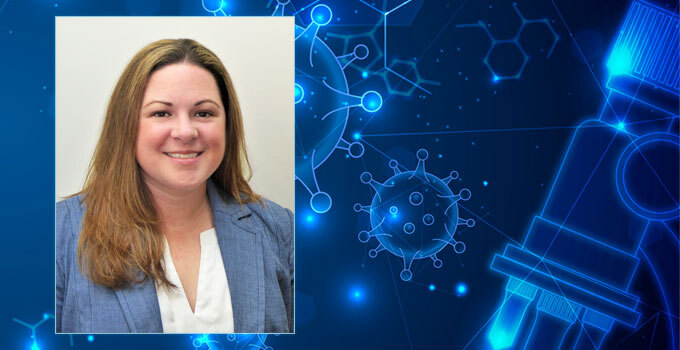OICR welcomes Dr. Courtney Jones to Ontario’s cancer research community
Starting up an independent research lab in the midst of a pandemic is difficult but Dr. Courtney Jones is up for the challenge. Jones moved to Canada prior to the lockdown and has been gearing up for new experiments since. Now, as an OICR Investigator, she has safely started working in her lab at the Princess Margaret Cancer Centre to find new solutions for the leading cause of leukemia deaths in Canada – acute myeloid leukemia (AML).
How did you become involved with leukemia research?
CJ: I grew up in rural Connecticut and I was always interested in science, but I became hooked on cancer research when I was in grad school. I had the privilege of joining Dr. William (Bill) Carroll’s lab at the New York University Langone Medical Center who had seen – and been an instrumental part of – remarkable progress in pediatric leukemias over the course of his career. He made it his mission to help patients with leukemia and – like him – I have too. I want to make an impact on people’s lives through research.
How has this informed your research priorities?
CJ: For me, the only thing I really care about is if my work is going to help patients. Maybe it won’t be tomorrow or the next day, but I have to see that it will have an impact. I tend to hire people and collaborate best with others with this end goal in mind – improving patient outcomes.
Throughout my academic career as a trainee under Dr. Carroll and Dr. Craig Jordan at the University of Colorado, I’ve seen how research can change the lives of patients. I use that motivation to prioritize my work.
What is your research focused on?
CJ: My research is focused on leukemic stem cells (LSCs) with the premise that if we can treat these cells, we could potentially eliminate or cure the disease entirely. My most significant contributions to the field have been centered around the metabolism of leukemia cells – or how they make energy.
Thanks to my mentors, we now know that LSCs rely on one specific pathway, oxidative phosphorylation, and when we block this pathway the cells lose their ability to make energy and therefore die. My work has found that LSCs – unlike normal healthy cells – are particularly dependent on amino acids, which means that we could potentially block amino acids and eliminate these roots of the disease.
How do these ideas reach patients?
CJ: When we made these discoveries, we joined a team that was testing this concept in a clinical trial using a combination of drugs. The results were unlike anything clinicians had seen before. Shutting down these specific metabolic pathways in leukemia cells drastically improved the lives of patients – some went from dying in pain to thriving and enjoying life.
Unfortunately, these drugs didn’t work for all patients. We’re now working to see if we can use new drugs or compounds to help these individuals.
Why did you choose to come here?
CJ: I don’t think there’s any place better in the entire world for stem cell biology than the Princess Margaret Cancer Centre. Right here we have Drs. John Dick and Aaron Schimmer. Without them, none of my research would have existed. I grateful to have the opportunity to work with them and many other wonderfully collaborative individuals across Ontario’s cancer research community.
How have you managed through the pandemic so far?
CJ: Despite the delays caused by COVID-19, we’re getting equipment into the lab and starting up experiments – all while following guidelines. I have an amazing Lab Technician who has been instrumental in getting everything set up and we’re happy to have initiated new experiments.
Read more about Dr. Courtney Jones or about OICR’s Investigator Awards Program.

